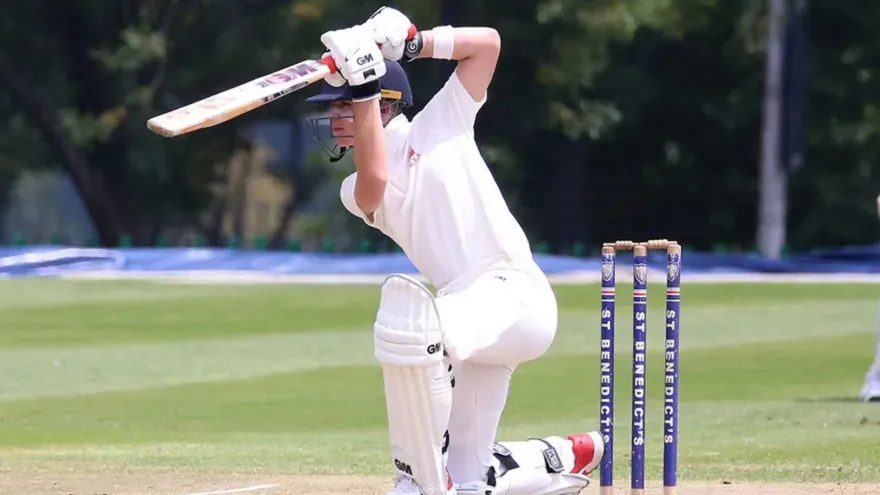Spin bowling is an art in the field of cricket which requires loads of boldness, considering the batsman always looks to find a way to pile on the runs whenever he sees a spinner jog at his bowling mark.
Finger spin used to be the solution in the past decade or so when it came to taking an important wicket as well as restricting the runs.
The finger spinner has the privilege to loop the ball with decent flight, while also having the platform to use his arm to go a bit defensive by bowling the faster one when the batsman looks to accelerate on the crease. It did seem that off-spinners from the likes of the Murali’s and Harbhajan’s were set to dominate the cricket arena with more students of similar skill for another era or so, even as the game got shorter.
But over the past few years, things have started to “turn” (pun intended), against the off-spinners of today’s time, particularly when it comes to the fifty over format and T20 cricket.
Enter – the wrist spinners. If spin bowling is an art, then wrist spin is the pinnacle of pulling off that art with great effect. One of the most challenging tasks is to release the ball with an inverted wrist, as quite often we’ve seen batters taking the charge due to misguided deliveries which stay short of length at a mellow pace, or are directed straight to the man on crease for a juicy full toss which he happily obliges by smashing it over the fence.
Usually known as the bowlers to hold the intangible “Hit-Me” sign, wrist spinners with an unconventional touch have come out fighting and have proved to be a revelation in modern day cricket with this particular art of theirs.

(The Afghani spin duo turned out to be the trump cards for their respective franchise)
Bowlers such as Kuldeep Yadav, Yuzvendra Chahal, Rashid Khan and Adil Rashid tend to release the ball slower through the air as compared to the regular finger spinners, who more commonly rely on the nature of turf that they’d be bowling on. The Afghani element in the IPL presented by the likes of Rashid Khan and Mujeeb ur Rahman had also sent a message to franchise owners from across the globe to invest more on such bowlers if their team wants to get wickets in heaps, as the duo have so regularly done, while talking about their performances in the high profile league for Hyderabad and Punjab respectively.
The slower movement of the white/red leather through the air leads to the ball having an increased revolution. This eventually causes the ball to have more spin on it, as well as drift which bamboozles the batsman to get beaten by it. The nature of today’s game, which promotes the attitude of counter-attacking a bowling unit through an explosive array of shots, also assists the wrist spinners cause, as the batters are seen top edging or mistiming the ball straight into the fielder's palms for an easy take.
Variations such as the googly, leg break, wrong-un, and the flipper make it much more difficult for the batsman to pick when it comes to facing the music up front. The more the variations -the more the complications - the more the chances of getting hit for runs - but with a higher probability of taking wickets in comparison to the rest.
World cricket has been given an indication that quality wrist spin is the answer of derailing an opposition, especially with the ICC Cricket World Cup looming large. A recent stat of Rashid Khan with 48 wickets, Kuldeep Yadav with 45, Adil Rashid with 42, and Mujeeb Ur Rahman with 37, which made them the top four wicket-takers in 2018 provides further solidarity to this claim, while India’s Yuzvendra Chahal made the seventh spot with 29 scalps under his belt.
From an Indian perspective, a reason for the domination in world cricket by the men in blue is due to snubbing finger spin over wrist spin in limited overs.

(The “Kulcha” attack have taken 148 wickets in just 79 ODIs for the men in blue)
Both Ashwin and Jadeja proved to be ineffective in the ICC Champions Trophy of 2017, and were particularly expensive in the finals, but a wakeup call of that sort was necessary as Virat Kohli and the team management banked their trust on the young wrist spinning duo of Kuldeep Yadav and Yuzvendra Chahal, who is also referred to as ‘Kulcha,’ when bowling in tandem.
Kuldeep and Chahal have in fact proved to be Team India’s formula of global superiority, be it at home, in the West Indies, in the nation down under - Australia, or the Kiwi-land – New Zealand.
Wrist spin has become a tough task to tackle by the world’s finest of batsmen, as it provides the Indian cricket team with that tag of ‘favorites’ while heading into the world cup in England and Wales.
It seemed as if Shane Warne and Anil Kumble were the final two cricketers who excelled at this skill with utmost perfection in international cricket. But a change in mindset added to the adaption of the unconventional mix in a team well and truly turns a playing XI into a winning XI.














